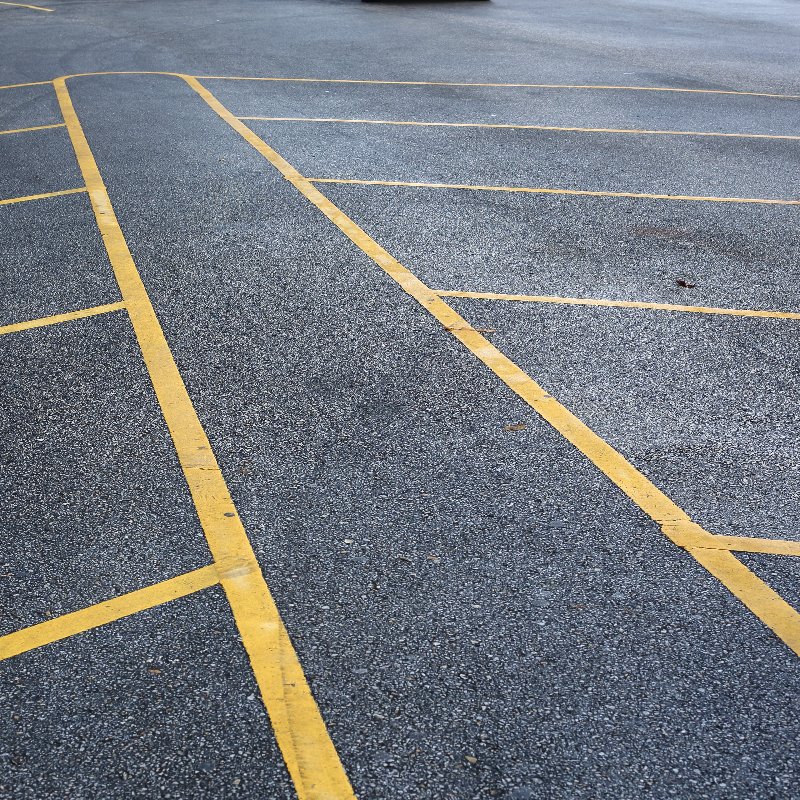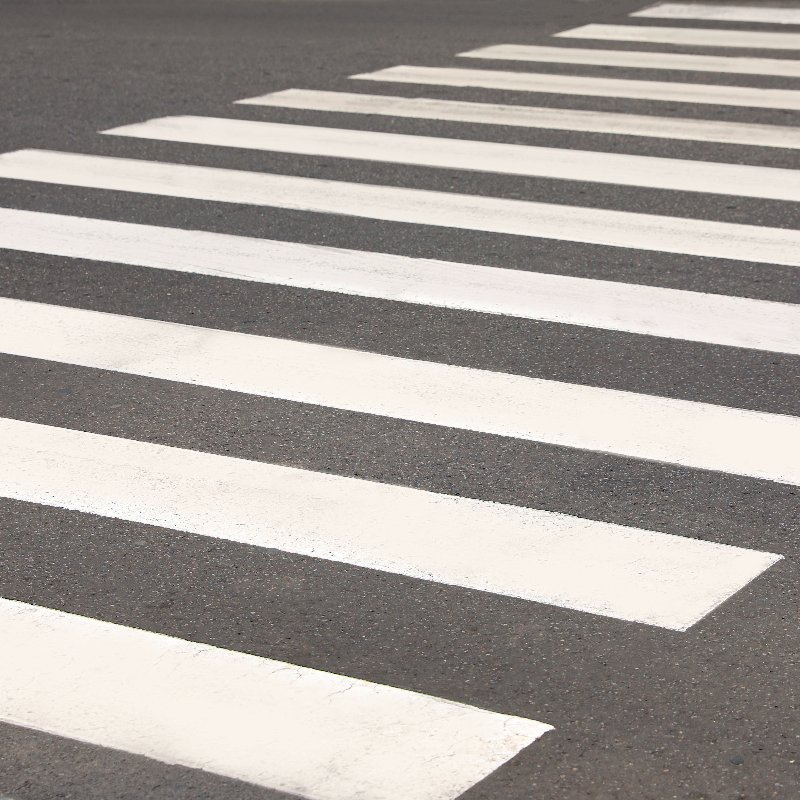
When you park your car at the doctor’s office or the shopping center, you’re probably aiming your car between some yellow lines. Those yellow lines indicate parking spaces, some have blue and white handicap striping for handicapped parking only, and some may have letters or numbers if the parking lot has assigned spots. Rarely do you find parking lots without pavement striping.
Some parking lots can be a madhouse, like retail stores during the holiday season. Can you imagine how hairy carry it would be in parking lots without pavement striping and markings? While those fire lane stripings seem to be taking up valuable parking space, think how frightening it would be if first responders couldn’t get to the door!
Yes, there is a means to the madness of pavement striping. Keeping traffic organized, keeping humans organized. That’s a big task for stripes of paint! So, what types of pavement stripings are there that can take on that big of a task?
There are several types of pavement striping, and they all have a specific meaning. Some pavement striping will have different meanings in different areas, but here are the basics that mean the same across the board:
White Lines: These are intended to keep traffic separated while moving in the same direction and there are three types:
- Single Broken White Line: You can cross these to change lanes if safe to do.
- Single Solid White Line: These indicate do not cross except in an emergency.
- Double Solid White Line: These indicate do not cross for any reason.
Yellow Lines: These are intended to keep traffic separated while moving in opposite directions and there are four types:
- Broken Yellow Line: These indicate you can change lanes if safe to do so.
- Solid Yellow Line: These indicate do not pass.
- Solid Yellow Line with Broken Yellow Line: These indicate that if you’re on the right side of the broken yellow line, passing traffic is allowed. If you are on the left side of the solid yellow line, do not pass traffic.
- Double Solid Yellow Lines: You may drive on the left side of the double yellow line.
Edge Lines: The double yellow lines are indicating this is a no-passing zone. You may only drive on the left side as you enter/exit, the lane is blocked, or there is an HOV lane entrance. Additional types of edge lines are for indication of where the pavement ends, white for the right and yellow for the left or for one-way.
Pavement Arrows: Pavement striping of arrows indicate which way traffic should flow. When they exist, you must only drive in the direction indicated by the arrows.
Reversible Lanes: Reversible traffic lanes pavement striping is intended to improve traffic flow, particularly during rush hours, and is often paired with traffic signs and lane signals.
Diamond Symbols & HOV Lanes: Diamond symbols indicate a special purpose lane like HOV lanes, which typically have certain times that are restricted for HOV traffic.
How do you paint lines on the pavement?
Pavement striping is necessary to show clear indications for traffic flow, parking authorization, and handicap-only designated parking. There are two ways this pavement striping can be done:
- Manually, using a four-inch paint roller, and painting over a chalk outline.
- Machine, with a parking lot line that paints straight lines on asphalt or concrete surface.
Both methods are sufficient for pavement striping after completing the required prepping pavement for striping based on the type of paint used. The types of paint used for pavement striping are:
- Water-Based Paint: This is the most used type of paint for pavement striping due to its low cost and fast drying. Spills are cleaned up easily with minimal damage to the area around the spill.
- Solvent-Based Paint: Instead of a water base, this paint has a chemical substance base, several types are within this type of pain, primarily acetone or epoxy. Where water base pavement striping paint doesn’t hold up well in cold/wet areas, these paints do not freeze.
- Thermoplastic: This isn’t a type of paint, but a plastic that liquifies as heat is applied and then solidifies as it cools down into place. Available in pre-cut pieces to make applying easy with arrows, letters, and symbols.
Should I hire a professional for pavement striping?
Yes, by having your parking lot done by a professional pavement striping company, you will know it has been done properly with the correct painting materials for the surface. Professional pavement striping companies have the latest information on what is required by law for parking lots, which will assure you that your property is done within the established laws.

In Closing
You’re anxious to get your business open for clients or patients, and you’ve had to complete so many levels of “must-dos” already! So, how long does pavement striping take? The actual process will depend on the size of the parking lot needing pavement stripping, but the drying process is usually complete within 15 minutes of application. However, it is recommended to keep traffic off the area for a full 24 hours to allow time for curing.
